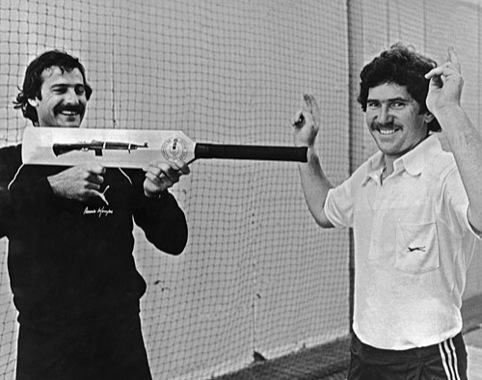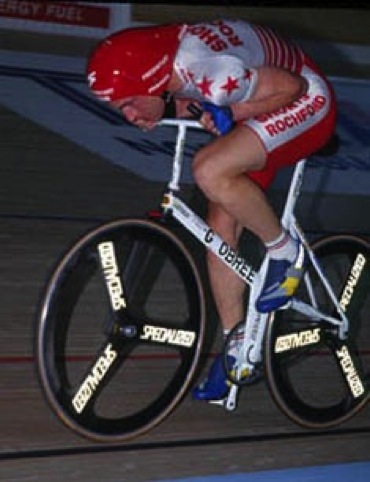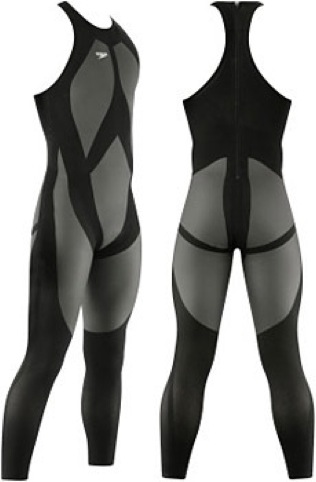When design in sport goes too far
This summer the Design Museum is set to host the Designed to Win exhibition, which looks at the way design is used in sport – including the design of running shoes, racing bikes and carbon-fibre javelins.
Part of the exhibition will look at ‘technological doping’ – examples of where sporting bodies have had to step in when new equipment is deemed to give some athletes an unfair advantage over others.
Design Week has picked its five top examples of where design in sport has crossed the legal boundaries.
Formula 1’s fan car

Some would argue that the whole point of Formula 1 is the battle undertaken by the car designers to push the legal limits of innovation. Just this season the Mercedes team was put under the microscope for its rear wing design, which rivals claimed was giving it an unfair advantage – although governing body the FIA cleared the design. One of the most outrageous and notorious banned designs in Formula 1 history is the Brabham BT46/B, which completed one race in the 1978 championship before being taken off the road. The car featured a giant fan on the rear, ostensibly for cooling purposes, but with the added benefit of pushing the car down harder on the track, thus improving cornering. Rival drivers also claimed the fan blew much and debris back out at them. The Brabham BT46/B was used only once, at the 1978 Swedish Grand Prix, where it was driven by race winner Nicki Lauda. It was withdrawn with its 100% record of victories intact.
The aluminium cricket bat

When legendary Australian fast bowler Dennis Lillee came out for the second day’s play during the test match against England at Perth in 1979, he was brandishing not the traditional willow bat, but a newly designed aluminium bat. The ComBat, as it was called, was designed by a friend of Lillee’s as a cheap replacement for traditional bats in schools and developing country’s. It is suggested that Lillee was using it as a marketing stunt, as there were no rules against using it at the time. Lillee had previously used it during a test match against the West Indies without incident. However, during this match, England captain Mike Brearley complained that the bat was damaging the leather ball (there was an audible ‘clunk’ every time Lillee made contact) and Australian captain Greg Chappell thought Lillee wasn’t striking the ball far enough and demanded he use a willow bat instead. Following a tense standoff with his umpires, Lillee eventually flung his aluminium bat to the ground and took up a willow bat instead. After this incident the laws of cricket were changed to state that the blade of the bat must be made of wood.
https://www.youtube.com/watch?v=7Pak_0L3rhc
Graeme Obree’s Old Faithful racing bike

Scottish cylist Graeme Obree broke the world hour record twice in the early 1990s, riding a bike he had made himself using parts from an old washing machine.‘Old Faithful’ as he dubbed it, used bearings from a washing machine, used straight bars instead of dropped and placed the bars much closer to the saddle. Obree also took out the top tube so that his knees wouldn’t hit it.The bike design forced Obree into a leaning-forward, tucked-in position, which was not only very aerodynamic, but also allowed him to push backwards more on to the pedals and generate better power. After Obree broke the world hour record twice, governing body the UCI banned both his bike and his riding position. He developed a new, riding position – the ‘superman’, which his arms outstretched, and this was also banned. ‘Old Faithful’ is now on display in the Riverside Transport Museum in Glasgow.
https://www.youtube.com/watch?v=ml6KT5MArC8
Astroturf football pitches

Astroturf football pitches (dubbed plastic pitches by detractors) were hugely controversial among players and fans during their brief surge of popularity in the UK. Astroturf pitches were used by QPR, Luton Town, Oldham Athletic and Preston North End at various stages in the 1980s and ‘90s, generally in a bid to avoid waterlogged playing surfaces, with Preston the last club to rip up their pitch in 1994.Players complained that the hard surface caused injuries (including long-term joint injuries) while many an unwary midfield hard-man emerged lacking several layers of skin on their legs following an ill-judged tackle. Astroturf pitches, although banned by many domestic football associations, are still in use at several clubs across Europe.
Full-body swimsuits

Speedo’s the LZR Racer full-body swimsuit, was created using fluid analysis software and Nasa’s testing facilities. The suit was designed to repell water, be hydrodynamic and increase oxygen flow to the muscles. At the 2008 Beijing Olympics, 98 per cent of all swimming medals were won by swimmers wearing the suit. The suit was so successful that swimmers later started wearing two or more at a time to increase the effect. Governing body FINA then stepped in in 2010 to introduce new rules on swimsuit design, stating that men’s swimsuits should only cover the area from the waist to the knee, and women’s from the shoulder to the knee.
-
Post a comment




